Premium Only Content
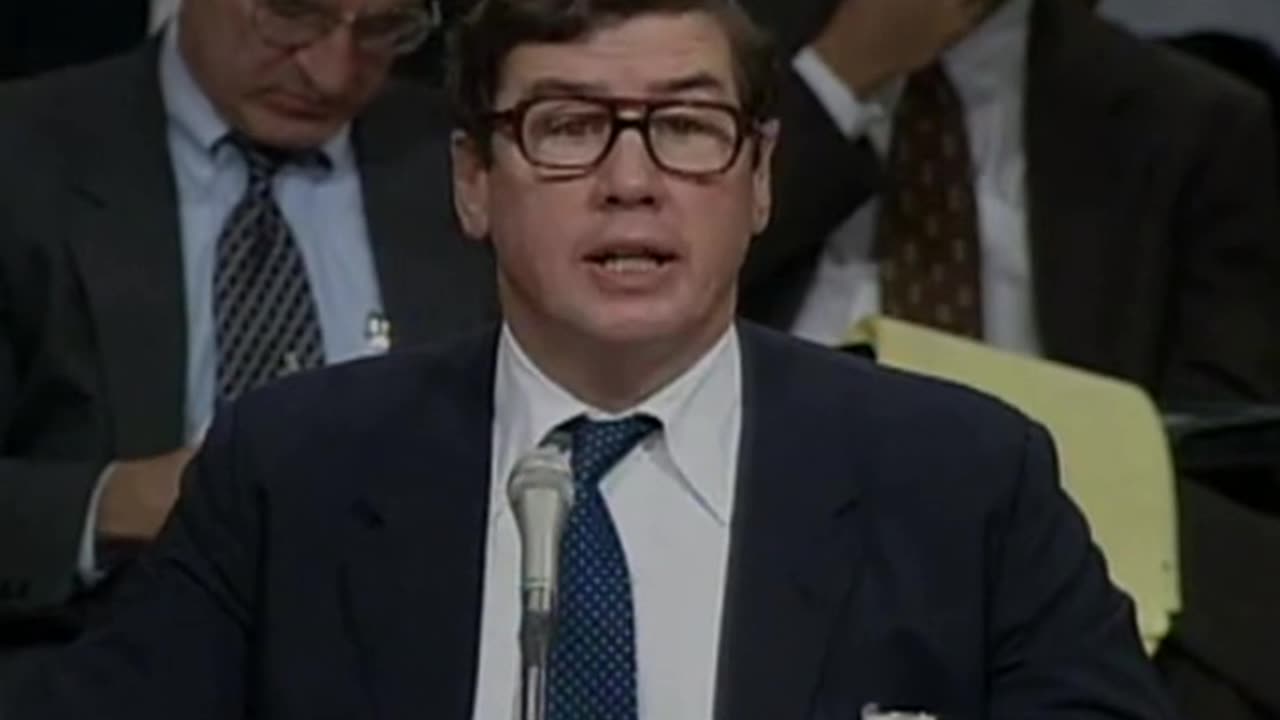
CIA Cocaine Drug Trafficking: Uncovering the Conspiracy (1996)
In 1996, journalist Gary Webb wrote a series of articles for the San Jose Mercury News, which claimed that the CIA had knowingly facilitated the sale of crack cocaine in Los Angeles to fund the Contra rebels in Nicaragua during the 1980s.
According to Webb's reporting, the CIA had allowed Nicaraguan drug traffickers to sell cocaine in the United States in exchange for their assistance in funding the Contra rebels. The Contras were a paramilitary group that had been formed to oppose the leftist Sandinista government in Nicaragua, which was backed by the Soviet Union.
Webb's articles generated a great deal of controversy and sparked a nationwide debate about the CIA's involvement in drug trafficking. The CIA denied the allegations, and some critics accused Webb of over-simplifying the complex relationship between the agency, drug traffickers, and the Contras.
Despite the controversy, Webb's reporting led to several official investigations, including a joint investigation by the CIA and the Justice Department. In 1998, the CIA's inspector general issued a report acknowledging that the agency had relationships with individuals and organizations involved in drug trafficking, but found no evidence to support Webb's specific allegations.
However, Webb's reporting had a lasting impact on public perception of the CIA and its activities. Many people continue to believe that the agency has been involved in drug trafficking and other illegal activities, and the story has been the subject of several books, documentaries, and films. Webb himself faced personal and professional challenges as a result of his reporting and tragically died by suicide in 2004.
On October 7, 1996, Congresswoman Maxine Waters held a press conference in South Central Los Angeles to address the San Jose Mercury News' story about the alleged involvement of the CIA in the crack cocaine epidemic that had devastated urban communities in the 1980s.
Waters, who represented California's 29th congressional district, was a vocal critic of the CIA and had been investigating the agency's activities in Central America for several years. She called the Mercury News' story a "bombshell" and demanded that the federal government launch a thorough investigation into the allegations.
At the press conference, Waters was joined by several community leaders and activists who had been affected by the crack epidemic. She emphasized the devastating impact that the drug had on African American communities and accused the government of turning a blind eye to the crisis.
"The people who are responsible for bringing crack cocaine to our community are the same people who brought guns to our community, who brought poverty to our community, who brought unemployment to our community," Waters said. "And we're going to get to the bottom of this, and we're going to hold those people accountable."
Waters' press conference was widely covered by the media and helped to raise public awareness of the allegations against the CIA. However, her calls for an investigation were met with resistance from some members of Congress and the federal government, who dismissed the allegations as conspiracy theories and refused to take action.
The allegations that the CIA had played a role in the crack cocaine epidemic that ravaged urban communities in the United States in the 1980s had far-reaching consequences, not only in the U.S. but also in Nicaragua, where the agency had been involved in covert operations to support the Contra rebels.
Morton Dean, a veteran journalist, traveled to Nicaragua to report on the impact of the allegations on the country and its people. His report focused on the reactions of Nicaraguans to the news that the CIA had allegedly either taken part in or countenanced the selling of crack cocaine through black street gangs in South Central Los Angeles to raise money for the Nicaraguan Contras.
Dean's report featured interviews with Nicaraguan officials, including the mayor of Tipitapa, a town that had been heavily impacted by the Contra war. The officials expressed their shock and outrage at the allegations, which they said confirmed their long-held suspicions that the U.S. government had been involved in illegal and immoral activities in their country.
The report also included footage of impoverished neighborhoods in Tipitapa, where residents spoke of the devastating impact of the Contra war and the subsequent U.S. sanctions on the country's economy. Some Nicaraguans expressed their frustration that the allegations of CIA involvement in drug trafficking had only surfaced years after the fact, and called for accountability and justice for the victims of the crack epidemic.
Dean's report was one of many that aired in the wake of the San Jose Mercury News' series on the alleged CIA-crack connection, and helped to bring the story to a wider audience. While the allegations were never definitively proven, the controversy surrounding the story raised important questions about the accountability of U.S. government agencies and their actions both at home and abroad.
On October 23, 1996, the United States Congress held a hearing to investigate the allegations made in the San Jose Mercury News' series about the alleged involvement of the Central Intelligence Agency (CIA) in the crack cocaine epidemic that had ravaged urban communities in the 1980s. The hearing, which was chaired by Rep. Julian Dixon (D-CA), was attended by several witnesses, including former and current CIA officials, journalists, and community leaders.
During the hearing, the witnesses provided testimony on a wide range of topics related to the allegations, including the CIA's involvement in covert operations in Nicaragua, the agency's relationship with drug traffickers, and the impact of the crack epidemic on African American communities.
A number of writers have alleged that the United States Central Intelligence Agency (CIA) was involved in the Nicaraguan Contras' cocaine trafficking operations during the 1980s Nicaraguan civil war. These claims have led to investigations by the United States government, including hearings and reports by the United States House of Representatives, Senate, Department of Justice, and the CIA's Office of the Inspector General which ultimately concluded the allegations were unsupported. The subject remains controversial.
A 1986 investigation by a sub-committee of the Senate Foreign Relations Committee (the Kerry Committee), found that "the Contra drug links included", among other connections, "[...] payments to drug traffickers by the U.S. State Department of funds authorized by the Congress for humanitarian assistance to the Contras, in some cases after the traffickers had been indicted by federal law enforcement agencies on drug charges, in others while traffickers were under active investigation by these same agencies."[1]
The charges of CIA involvement in Contra cocaine trafficking were revived in 1996, when a newspaper series by reporter Gary Webb in the San Jose Mercury News claimed that the trafficking had played an important role in the creation of the crack cocaine drug problem in the United States. Webb's series led to three federal investigations, all of which concluded there was no evidence of a conspiracy by CIA officials or its employees to bring drugs into the United States.[2][3][4] The Los Angeles Times, The New York Times, and The Washington Post launched their own investigations and rejected Webb's allegations.[5] The agency was aware of trafficking, and (in some cases) dissuaded the DEA and other agencies from investigating the Contra supply networks involved.[6]
Early reports of Contra cocaine trafficking
In 1984, U.S. officials began receiving reports of Contra cocaine trafficking. Three officials told journalists that they considered these reports "reliable." Former Panamanian deputy health minister Dr. Hugo Spadafora, who had fought with the Contra army, outlined charges of cocaine trafficking to a prominent Panamanian official. Spadafora was later found murdered. The charges linked the Contra trafficking to Sebastián González Mendiola, who was charged with cocaine trafficking on November 26, 1984, in Costa Rica.[7]
In 1985, another Contra leader "told U.S. authorities that his group was being paid $50,000 by Colombian traffickers for help with a 100 kilograms (220 lb) cocaine shipment and that the money would go 'for the cause' of fighting the Nicaraguan government." A 1985 National Intelligence Estimate revealed cocaine trafficking links to a top commander working under Contra leader Edén Pastora.[7][8][9] Pastora had complained about such charges as early as March 1985, claiming that "two 'political figures' in Washington told him last week that State Department and CIA personnel were spreading the rumor that he is linked to drug trafficking in order to isolate his movement."[10]
On December 20, 1985, these and other additional charges were laid out in an Associated Press article after an extensive investigation, which included interviews with "officials from the Drug Enforcement Administration (DEA), Customs Service, Federal Bureau of Investigation (FBI) and Costa Rica's Public Security Ministry, as well as rebels and Americans who work with them". Five American Contra supporters who worked with the rebels confirmed the charges, noting that "two Cuban-Americans used armed rebel troops to guard cocaine at clandestine airfields in northern Costa Rica. They identified the Cuban-Americans as members of Brigade 2506, an anti-Castro group that participated in the 1961 Bay of Pigs invasion of Cuba. Several also said they supplied information about the smuggling to U.S. investigators." One of the Americans said "that in one ongoing operation, the cocaine is unloaded from planes at rebel airstrips and taken to an Atlantic coast port where it is concealed on shrimp boats that are later unloaded in the Miami area."[7]
On March 16, 1986, the San Francisco Examiner published a report on the "1983 seizure of 430 pounds (200 kg) of cocaine from a Colombian freighter" in San Francisco; it said that a "cocaine ring in the San Francisco Bay area helped finance Nicaragua's Contra rebels." Carlos Cabezas, convicted of conspiracy to traffic cocaine, said that the profits from his crimes "belonged to ... the Contra revolution." He told the Examiner, "I just wanted to get the Communists out of my country." Julio Zavala, also convicted on trafficking charges, said "that he supplied $500,000 to two Costa Rican-based Contra groups and that the majority of it came from cocaine trafficking in the San Francisco Bay area, Miami and New Orleans."[11]
FBI probe
In April 1986, Associated Press reported on an FBI probe into Contra cocaine trafficking. According to the report, "Twelve American, Nicaraguan and Cuban-American rebel backers interviewed by The Associated Press said they had been questioned over the past several months [about contra cocaine trafficking] by the FBI. In the interviews, some covering several days and being conducted in Florida, Alabama, Mississippi, Louisiana, Texas, Colorado and California, several of the Contra backers told AP of firsthand knowledge of cocaine trafficking."[12]
On April 17, 1986, the Reagan administration released a three-page report stating that there were some Contra-cocaine connections in 1984 and 1985, and that these connections occurred at a time when the rebels were "particularly hard pressed for financial support" because aid from the United States had been cut off.[13] The report said: "We have evidence of a limited number of incidents in which known drug traffickers have tried to establish connections with Nicaraguan resistance groups" and that the drug activity took place "without the authorization of resistance leaders."[13]
Kerry Committee investigation
Main article: Kerry Committee report
Once you set up a covert operation to supply arms and money, it's very difficult to separate it from the kind of people who are involved in other forms of trade, and especially drugs. There is a limited number of planes, pilots and landing strips. By developing a system for supply of the Contras, the US built a road for drug supply into the US.
— Former contract analyst for the CIA David MacMichael[14]
The U.S. Senate Foreign Relations Committee's Subcommittee on Terrorism, Narcotics, and International Operations, chaired at the time by Senator John Kerry, held a series of hearings from 1987 to 1988 on drug cartels and drug money laundering in South and Central America and the Caribbean.
The Subcommittee's final report, issued in 1989, said that Contra drug links included:
Involvement in narcotics trafficking by individuals associated with the Contra movement.
Participation of narcotics traffickers in Contra supply operations through business relationships with Contra organizations.
Provision of assistance to the Contras by narcotics traffickers, including cash, weapons, planes, pilots, air supply services and other materials, on a voluntary basis by the traffickers.
Payments to drug traffickers by the U.S. State Department of funds authorized by the Congress for humanitarian assistance to the Contras, in some cases after the traffickers had been indicted by federal law enforcement agencies on drug charges, in others while traffickers were under active investigation by these same agencies.[1]
According to the report, the U.S. State Department paid over $806,000 to "four companies owned and operated by narcotics traffickers" to carry humanitarian assistance to the Contras.[1]
Dark Alliance series
From August 18–20, 1996, the San Jose Mercury News published the Dark Alliance series by Gary Webb,[15][16] which claimed:
For the better part of a decade, a San Francisco Bay Area drug ring sold tons of cocaine to the Crips and Bloods street gangs of Los Angeles and funneled millions in drug profits to a Latin American guerrilla army run by the U.S. Central Intelligence Agency. [This drug ring] opened the first pipeline between Colombia's cocaine cartels and the black neighborhoods of Los Angeles [and, as a result,] the cocaine that flooded in helped spark a crack explosion in urban America.[17]
To support these claims, the series focused on three men: Ricky Ross, Oscar Danilo Blandón, and Norwin Meneses. According to the series, Ross was a major drug dealer in Los Angeles, and Blandón and Meneses were Nicaraguans who smuggled drugs into the U.S. and supplied dealers like Ross. The series alleged that the three had relationships with the Contras and the CIA, and that law enforcement agencies failed to successfully prosecute them largely due to their Contra and CIA connections.
Response
African Americans, especially in South Central Los Angeles where the dealers discussed in the series had been active, responded with outrage to the series' charges.[18][19]
California senators Barbara Boxer and Dianne Feinstein also took note and wrote to CIA director John Deutch and Attorney General Janet Reno, asking for investigations into the articles.[20] Maxine Waters, the Representative for California's 35th district, which includes South-Central Los Angeles, was also outraged by the articles and became one of Webb's strongest supporters.[21] Waters urged the CIA, the Department of Justice, and the House Permanent Select Committee on Intelligence to investigate.
By the end of September, three federal investigations had been announced: an investigation into the CIA allegations conducted by CIA Inspector-General Frederick Hitz, an investigation into the law enforcement allegations by Justice Department Inspector-General Michael Bromwich, and a second investigation into the CIA by the House Intelligence Committee.
On October 3, 1996, LA County Sheriff Sherman Block ordered a fourth investigation into Webb's claims that a 1986 raid on Blandón's drug organization by the Los Angeles Sheriff's Department had produced evidence of CIA ties to drug smuggling and that this was later suppressed.[22]
Coverage in other papers
In early October, 1996, a front-page article in The Washington Post[23] by reporters Roberto Suro and Walter Pincus, argued that "available information" did not support the series's claims, and that "the rise of crack" was "a broad-based phenomenon" driven in numerous places by diverse players. The article also discussed Webb's contacts with Ross's attorney and prosecution complaints of how Ross's defense had used Webb's series.[24]
The New York Times published two articles on the series in mid-October, both written by reporter Tim Golden. One described the series' evidence as "thin";[19] the second, citing interviews with current and former intelligence and law-enforcement officials, questioned the importance of the drug dealers discussed in the series, both in the crack cocaine trade and in supporting the Nicaraguan Contras' fight against the Sandinista government.[25]
The Los Angeles Times devoted the most space to the story, developing its own three-part series called The Cocaine Trail. The series ran from October 20–22, 1996, and was researched by a team of 17 reporters. The three articles in the series were written by four reporters: Jesse Katz, Doyle McManus, John Mitchell, and Sam Fulwood. The first article, by Katz, developed a different picture of the origins of the crack trade than Dark Alliance had described, with more gangs and smugglers participating.[26] The second article, by McManus, was the longest of the series, and dealt with the role of the Contras in the drug trade and CIA knowledge of drug activities by the Contras.[27] McManus found Blandón and Meneses's financial contributions to Contra organizations to be significantly less than the "millions" claimed in Webb's series, and no evidence that the CIA had tried to protect them. The third article, by Mitchell and Fulwood, covered the effects of crack on African Americans and how it affected their reaction to some of the rumors that arose after the Dark Alliance series.[28]
Mercury News response
Surprised by The Washington Post article, Mercury News executive editor Jerome Ceppos wrote to the Post defending the series.[29] The Post ultimately refused to print his letter.[30] Ceppos also asked reporter Pete Carey to write a critique of the series for publication in The Mercury News, and had the controversial website artwork changed.[29] Carey's critique appeared in mid-October and went through several of the Post criticisms of the series, including the importance of Blandón's drug ring in spreading crack, questions about Blandón's testimony in court, and how specific series allegations about CIA involvement had been, giving Webb's responses.[31]
When the Los Angeles Times series appeared, Ceppos again wrote to defend the original series. He also defended the series in interviews with all three papers.[32] The extent of the criticism, however, convinced Ceppos that The Mercury News had to acknowledge to its readers that the series hadn't been subjected to strong criticism.[33] He did this in a column that appeared on November 3, defending the series, but also committing the paper to a review of major criticisms.[34]
Ceppos' column drew editorial responses from both The New York Times and The Washington Post. An editorial in the Times, while criticizing the series for making "unsubstantiated charges," conceded that it did find "drug-smuggling and dealing by Nicaraguans with at least tentative connections to the Contras" and called for further investigation.[35]
The Post response came from the paper's ombudsman, Geneva Overholser.[36] Overholser was harshly critical of the series, "reported by a seemingly hotheaded fellow willing to have people leap to conclusions his reporting couldn't back up." But while calling the flaws in the series "unforgivably careless journalism," Overholser also criticized the Post's refusal to print Ceppos' letter defending the series and sharply criticized the Post's coverage of the story. Calling the Post's overall focus "misplaced", Overholser expressed regret that the paper had not taken the opportunity to re-examine whether the CIA had overlooked Contra involvement in drug smuggling, "a subject The Post and the public had given short shrift."
In contrast, the series received support from Steve Weinberg, a former executive director of Investigative Reporters and Editors. In a long review of the series' claims in The Baltimore Sun, Weinberg said: "I think the critics have been far too harsh. Despite some hyped phrasing, 'Dark Alliance' appears to be praiseworthy investigative reporting."[37]
After the series' publication, the Northern California branch of the national Society of Professional Journalists had voted Webb "Journalist of the Year" for 1996.[38] Despite the controversy that soon overtook the series, and the request of one board member to reconsider, the branch's board went ahead with the award in November.
End of the series
After Ceppos' column, The Mercury News spent the next several months conducting an internal review of the story. The review was conducted primarily by editor Jonathan Krim and reporter Pete Carey, who had written the paper's first published analysis of the series. Carey ultimately decided that there were problems with several parts of the story and wrote a draft article incorporating his findings.[39]
The paper also gave Webb permission to visit Central America again to get more evidence supporting the story.[40] By January, Webb filed drafts of four more articles based on his trip, but his editors concluded that the new articles would not help shore up the original series' claims.[41] The editors met with Webb several times in February to discuss the results of the paper's internal review and eventually decided to print neither Carey's draft article nor the articles Webb had filed.[42] Webb was allowed to keep working on the story and made one more trip to Nicaragua in March.
At the end of March, however, Ceppos told Webb that he was going to present the internal review findings in a column.[41] After discussions with Webb, the column was published on May 11, 1997.[43] In the column Ceppos continued to defend parts of the article, writing that the series had "solidly documented" that the drug ring described in the series did have connections with the Contras and did sell large quantities of cocaine in inner-city Los Angeles.
But, Ceppos wrote, the series "did not meet our standards" in four areas. 1) It presented only one interpretation of conflicting evidence and in one case "did not include information that contradicted a central assertion of the series." 2) The series' estimates of the money involved was presented as fact instead of an estimate. 3) The series oversimplified how the crack epidemic grew. 4) The series "created impressions that were open to misinterpretation" through "imprecise language and graphics."[44]
Ceppos noted that Webb did not agree with these conclusions. He concluded: "How did these shortcomings occur? ... I believe that we fell short at every step of our process: in the writing, editing and production of our work. Several people here share that burden ... But ultimately, the responsibility was, and is, mine."
Investigation after Dark Alliance
Justice Department report
The Department of Justice Inspector-General's report[45] was released on July 23, 1998. According to the report's "Epilogue", the report was completed in December 1997 but was not released because the DEA was still attempting to use Danilo Blandón in an investigation of international drug dealers and was concerned that the report would affect the viability of the investigation. When Attorney General Janet Reno determined that a delay was no longer necessary, the report was released unchanged.[46]
The report covered actions by Department of Justice employees in the Federal Bureau of Investigation, the DEA, the Immigration and Naturalization Service, and U.S. Attorneys' Offices. It found that "the allegations contained in the original Mercury News articles were exaggerations of the actual facts." After examining the investigations and prosecutions of the main figures in the series, Blandón, Meneses and Ross, it concluded: "Although the investigations suffered from various problems of communication and coordination, their successes and failures were determined by the normal dynamics that affect the success of scores of investigations of high-level drug traffickers ... These factors, rather than anything as spectacular as a systematic effort by the CIA or any other intelligence agency to protect the drug trafficking activities of Contra supporters, determined what occurred in the cases we examined."[47]
It also concluded that "the claims that Blandón and Meneses were responsible for introducing crack cocaine into South Central Los Angeles and spreading the crack epidemic throughout the country were unsupported." Although it did find that both men were major drug dealers, "guilty of enriching themselves at the expense of countless drug users", and that they had contributed money to the Contra cause, "we did not find that their activities were responsible for the crack cocaine epidemic in South Central Los Angeles, much less the rise of crack throughout the nation, or that they were a significant source of support for the Contras."
The report called several of its findings "troubling." It found that Blandón received permanent resident status "in a wholly improper manner" and that for some time the Department "was not certain whether to prosecute Meneses, or use him as a cooperating witness." Regarding issues raised in the series' shorter sidebar stories, it found that some in the government were "not eager" to have DEA agent Celerino Castillo "openly probe" activities at Ilopango Airport in El Salvador, where covert operations in support of the Contras were undertaken, and that the CIA had indeed intervened in a case involving smuggler Julio Zavala. It concluded, however, that these problems were "a far cry from the type of broad manipulation and corruption of the federal criminal justice system suggested by the original allegations."
CIA report
The CIA Inspector-General's report was issued in two volumes. The first one, "The California Story", was issued in a classified version on December 17, 1997, and in an unclassified version on January 29, 1998.[48] The second volume, "The Contra Story," was issued in a classified version on April 27, 1998, and in an unclassified version on October 8, 1998.[49]
According to the report, the Inspector-General's office (OIG) examined all information the agency had "relating to CIA knowledge of drug trafficking allegations in regard to any person directly or indirectly involved in Contra activities." It also examined "how CIA handled and responded to information regarding allegations of drug trafficking" by people involved in Contra activities or support.[50]
The first volume of the report found no evidence that "any past or present employee of CIA, or anyone acting on behalf of CIA, had any direct or indirect dealing" with Ross, Blandón, or Meneses or that any of the other figures mentioned in Dark Alliance were ever employed by or associated with or contacted by the agency.[51]
It found nothing to support the claim that "the drug trafficking activities of Blandón and Meneses were motivated by any commitment to support the Contra cause or Contra activities undertaken by CIA." It noted that Blandón and Meneses claimed to have donated money to Contra sympathizers in Los Angeles, but found no information to confirm that it was true or that the agency had heard of it.[51]
It found no information to support the claim that the agency interfered with law enforcement actions against Ross, Blandón or Meneses.[51]
In the 623rd paragraph, the report described a cable from the CIA's Directorate of Operations dated October 22, 1982, describing a prospective meeting between Contra leaders in Costa Rica for "an exchange in [the United States] of narcotics for arms, which then are shipped to Nicaragua."[49][non-primary source needed] The two main Contra groups, US arms dealers, and a lieutenant of a drug ring which imported drugs from Latin America to the US west coast were set to attend the Costa Rica meeting. The lieutenant trafficker was also a Contra, and the CIA knew that there was an arms-for-drugs shuttle and did nothing to stop it.[52]
The report stated that the CIA had requested the Justice Department return $36,800 to a member of the Meneses drug ring, which had been seized by DEA agents in the Frogman raid in San Francisco. The CIA's Inspector General said the Agency wanted the money returned "to protect an operational equity, i.e., a Contra support group in which it [CIA] had an operational interest."[52]
The report also stated that former DEA agent Celerino Castillo alleged that during the 1980s, Ilopango Airport in El Salvador was used by Contras for drug smuggling flights, and "his attempts to investigate Contra drug smuggling were stymied by DEA management, the U.S. Embassy in El Salvador, and the CIA".[53]
During a PBS Frontline investigation, DEA field agent Hector Berrellez said, "I believe that elements working for the CIA were involved in bringing drugs into the country."
"I know specifically that some of the CIA contract workers, meaning some of the pilots, in fact were bringing drugs into the U.S. and landing some of these drugs in government air bases. And I know so because I was told by some of these pilots that in fact they had done that."[54]
Testimony of the CIA Inspector General
Six weeks after the declassified and heavily censored first volume of the CIA report was made public, Inspector General Frederick Hitz testified before a House congressional committee.[52] Hitz stated that:
Volume II ... will be devoted to a detailed treatment of what was known to CIA regarding dozens of people and a number of companies connected in some fashion to the Contra program or the Contra movement that were the subject of any sort of drug trafficking allegations. Each is closely examined in terms of their relationship with CIA, the drug trafficking activity that was alleged, the actions CIA took in response to the allegations, and the extent of information concerning the allegations that was Shared with U.S. law enforcement and Congress. As I said earlier, we have found no evidence in the course of this lengthy investigation of any conspiracy by CIA or its employees to bring drugs into the United States. However, during the Contra era, CIA worked with a variety of people to support the Contra program. These included CIA assets, pilots who ferried supplies to the Contras, as well as Contra officials and others. Let me be frank about what we are finding. There are instances where CIA did not, in an expeditious or consistent fashion, cut off relationships with individuals supporting the Contra program who were alleged to have engaged in drug trafficking activity or take action to resolve the allegations.[55][56]
Also revealed was a letter between the Attorney General William French Smith and the CIA that omitted narcotics violations among the list of crimes agency officers were required to report. In a follow up letter later Smith stated "I have been advised that a question arose regarding the need to add all narcotics violations to the list of "non-employee" crimes...". Citing existing federal policy on narcotics enforcement, Smith wrote: "In light of these provisions and in view of the fine cooperation the Drug Enforcement Administration has received from CIA, no formal requirement regarding the reporting of narcotics violations has been included in these procedures."[57]
This agreement, which had not previously been revealed, came at a time when there were allegations that the CIA was using drug dealers in its controversial covert operation to bring down the leftist Sandinista government in Nicaragua.[56] In 1986, the agreement was modified to require the CIA to stop paying agents who it believed were involved in the drug trade.[52]
House committee report
The House Intelligence Committee issued its report in February 2000.[58] According to the report, it used Webb's reporting and writing as "key resources in focusing and refining the investigation." Like the CIA and Justice Department reports, it also found that neither Blandón, Meneses, nor Ross were associated with the CIA.[59]
Examining the support that Meneses and Blandón gave to the local Contra organization in San Francisco, the report concluded that it was "not sufficient to finance the organization" and did not consist of 'millions', contrary to the claims of the Dark Alliance series. This support "was not directed by anyone within the Contra movement who had an association with the CIA," and the Committee found "no evidence that the CIA or the Intelligence Community was aware of these individuals' support."[59] It also found no evidence to support Webb's suggestion that several other drug smugglers mentioned in the series were associated with the CIA, or that anyone associated with the CIA or other intelligence agencies was involved in supplying or selling drugs in Los Angeles.[59]
See also
flagUnited States portal
Allegations of CIA drug trafficking
Human rights violations by the CIA
War on Drugs
Coca
Notes
Subcommittee on Terrorism, Narcotics, and International Communications and International Economic Policy, Trade, Oceans, and Environment of the Committee on Foreign Relations, United States Senate (1989). Drugs, law enforcement, and foreign policy : A report. S. PRT. ;100-165. Washington, DC, USA: United States Government Publishing Office (USGPO).
Weiner, Tim (December 19, 1997). "C.I.A. Says It Has Found No Link Between Itself and Crack Trade". The New York Times. Retrieved August 6, 2021.
Daunt, Tina (March 16, 2005). "Written in Pain". Los Angeles Times. Los Angeles, California, USA. Archived from the original on January 29, 2015. Retrieved April 3, 2015.
Schou 2006, p. 167,169-170,184.
Daunt, Tina (March 16, 2005). "Written in Pain". Los Angeles Times. Los Angeles, California, USA. Archived from the original on January 29, 2015. Retrieved April 3, 2015.
Aiken, Jonathan. "CIA admits it overlooked Contras' links to drugs". CNN. CNN. Retrieved February 4, 2022.
Brian Barger and Robert Parry, "Reports Link Nicaraguan Rebels to Cocaine Trafficking", Associated Press (December 20, 1985).
Scott, Peter Dale & Marshall, Jonathan (1998). Cocaine politics: drugs, armies, and the CIA in Central America. University of California Press. pp. 8–9. ISBN 978-0-520-21449-1.
Marcy, William L. (2010). The Politics of Cocaine: How U.S. Policy Has Created a Thriving Drug Industry in Central and South America. Chicago Review Press. pp. 108–109. ISBN 978-1-55652-949-8.
John E. Newhagen, "Commander Zero blasts CIA, State Department", United Press International (March 25, 1985).
"Report: Cocaine Ring Finances Contras", Associated Press (March 16, 1986).
Brian Bargar and Robert Parry, "FBI Reportedly Probes Contras on Drugs, Guns", Associated Press (April 10, 1986).
"US Concedes Contras Linked to Drugs, But Denies Leadership Involved". Associated Press. April 17, 1986. Retrieved June 11, 2015.
John Lichfield and Tim Cornwell, "'America has fought the wrong war': Did US policy in central America in the 1980s assist the growth of the Colombian cocaine cartels?" The Independent (26 August 1989) p. 8.
Webb, Gary (August 18–20, 1996). "Dark Alliance". San Jose Mercury News. Archived from the original on December 20, 1996.
Many follow-ups to the original series published over the next three months are in the series archive at "Dark Alliance: Update archive". December 20, 1996. Archived from the original on December 20, 1996. Retrieved February 8, 2015.
Webb, Gary (August 18, 1996). "America's 'crack' plague has roots in Nicaragua war". San Jose Mercury News. Archived from the original on December 20, 1996. Retrieved February 5, 2015.
Schou 2006, p. 112.
Golden, Tim (October 21, 1996). "Though Evidence Is Thin, Tale of C.I.A. and Drugs Has a Life of Its Own". The New York Times. Retrieved January 27, 2015.
Schou 2006, p. 116.
Schou 2006, p. 115.
"Los Angeles Sherrif's Department Inquiry Findings". San Jose Mercury News. December 10, 1996. Archived from the original on April 9, 1997. Retrieved February 11, 2015.
Suro, Roberto; Walter Pincus (October 4, 1996). "The CIA and Crack: Evidence Is Lacking Of Alleged Plot". The Washington Post.
This is discussed briefly in Schou 2006, p. 86.
Golden, Tim (October 21, 1996). "Pivotal Figures of Newspaper Series May Be Only Bit Players". The New York Times. Retrieved January 27, 2015.
Katz, Jesse (October 20, 1996). "Tracking the Genesis of the Crack Trade". Los Angeles Times. Retrieved January 29, 2015.
McManus, Doyle (October 21, 1996). "Examining Charges of CIA Role in Crack Sales". Los Angeles Times. Retrieved January 29, 2015.
Mitchell, John L.; Sam Fulwood (October 22, 1996). "History Fuels Outrage Over Crack Allegations". Los Angeles Times. Retrieved January 30, 2015.
Ceppos, Jerry (October 18, 1996). "Mercury News Executive Editor Jerry Ceppos' Letter to the Washington Post". Dark Alliance: library. Archived from the original on April 9, 1997. Retrieved February 15, 2015.
"Washington Post response to Mercury News Executive Editor Jerry Ceppos". October 24, 1996. Archived from the original on March 30, 1997. Retrieved February 15, 2015.
Carey, Pete (October 13, 1996). "'Dark Alliance' series takes on a life of its own". San Jose Mercury News. Archived from the original on December 20, 1996. Retrieved February 5, 2015.
Schou 2006, p. 149.
Schou 2006, p. 153.
Ceppos, Jerry (November 3, 1996). "Perspective: In the eye of the storm". San Jose Mercury News. Archived from the original on April 9, 1997. Retrieved February 5, 2015.
"The CIA and Drugs". The New York Times. November 5, 1996. Retrieved February 15, 2015.
Overholser, Geneva (November 10, 1996). "The CIA, Drugs And the Press". The Washington Post.
Weinberg, Steve (November 17, 1996). "Despite critics, a good story Crack and the contras". Baltimore Sun. Retrieved February 16, 2015.
Shepard, Alicia C. (February 1997). "The web that Gary spun". American Journalism Review. Vol. 19, no. 1. pp. 34–. Retrieved February 4, 2015.
Schou 2006, p. 153-156.
Schou 2006, 152.
Schou 2006, p. 158.
Schou 2006, p. 156.
Schou 2006, p. 160.
Ceppos, Jerry (May 11, 1997). "To readers of our 'Dark Alliance' series". San Jose Mercury News. Archived from the original on November 19, 1997. Retrieved February 11, 2015.
"THE CIA-CONTRA-CRACK COCAINE CONTROVERSY: A REVIEW OF THE JUSTICE DEPARTMENT'S INVESTIGATIONS AND PROSECUTIONS". Retrieved July 5, 2007.
Bromwich, Michael R. "CIA-Contra-Crack Cocaine Controversy: Epilogue". Retrieved February 9, 2015.
Bromwich, Michael R. "CIA-Contra-Crack Cocaine Controversy: Conclusions". Retrieved February 9, 2015.
Central Intelligence Agency Office of Inspector General (January 29, 1998). "Central Intelligence Agency Inspector General Report of Investigation Allegations of Connections Between CIA and the Contras in Cocaine Trafficking to the United States (96-0143-IG) Volume I: The California Story". Retrieved January 13, 2008.
Central Intelligence Agency Office of Inspector General (October 8, 1998). "Central Intelligence Agency Inspector General Report of Investigation Allegations of Connections Between CIA and the Contras in Cocaine Trafficking to the United States (96-0143-IG) Volume II: The Contra Story". Retrieved January 13, 2008.
Hitz, "Scope of investigation."
Hitz, Vol. 1, "Conclusions."
Cockburn & St Clair 1999.
"THE CIA-CONTRA-CRACK COCAINE CONTROVERSY: A REVIEW OF THE JUSTICE DEPARTMENT'S INVESTIGATIONS AND PROSECUTIONS". pp. Chapter X. Retrieved July 5, 2007.
Delaval, Craig. "Frontline: Cocaine, Conspiracy Theories & the C.I.A. in Central America". Frontline. PBS. Archived from the original on October 19, 2000. Retrieved February 25, 2021.
Frederick P. Hitz (March 16, 1998). "Prepared Statement of Frederick P. Hitz inspector General, Central Intelligence Agency Before The House Committee On Intelligence subject — Investigation Of allegations of Connections Between CIA and the Contras In Drug Trafficking to the United States". Federal News Service. Retrieved April 22, 2006.
Pincus, Walter (March 17, 1998). "Inspector: CIA Kept Ties With Alleged Traffickers". The Washington Post. pp. A12.
"Cocaine, Conspiracy Theories & the C.I.A. in Central America", Frontline, Craig Delaval, Retrieved October 21, 2019.
United States House Permanent Select Committee on Intelligence (February 2000). Report On the Central Intelligence Agency's Alleged Involvement in Crack Cocaine Trafficking in the Los Angeles Area.
"Report on Alleged Involvement: Findings" 43.
References
Cockburn, Alexander; St Clair, Jeffrey (1999). Whiteout: The CIA, Drugs and the Press. Brooklyn, NY, USA: Verso. ISBN 978-1-85984-258-4.
Grim, Ryan; Sledge, Matt (October 10, 2014). "Key Figures In CIA-Crack Cocaine Scandal Begin To Come Forward". Huffington Post. Retrieved April 17, 2017.
McCoy, Alfred W. (2003). The Politics of Heroin: CIA Complicity in the Global Drug Trade. Lawrence Hill Books. ISBN 1-55652-483-8.
Report of Investigation Concerning Allegations of Connections Between CIA and The Contras in Cocaine Trafficking to the United States
The Central Intelligence Agency Office of the Inspector General report on the claims made in the Dark Alliance newspaper series, released in two volumes, volume 1 on January 29, 1998, and volume 2 on October 8, 1998.
Schou, Nick (2006). Kill the messenger: how the CIA's crack-cocaine controversy destroyed journalist Gary Webb. Nation Books. ISBN 978-1-56025-930-5.
Scott, Peter Dale (1998). Cocaine Politics : Drugs, Armies, and the CIA in Central America. University of California Press. ISBN 0-520-21449-8.
Webb, Gary (1998). Dark Alliance: The CIA, The Contras, And The Crack Cocaine Explosion. Seven Stories Press. ISBN 1-888363-68-1.
External links
"PBS Frontline: Cocaine, Conspiracy Theories & the C.I.A. in Central America". Frontline. PBS.
Central Intelligence Agency. "Managing a Nightmare: CIA Public Affairs and the Drug Conspiracy Story" (PDF). pp. 9–14. Archived from the original (PDF) on January 18, 2017. - Release approved on July 29, 2014
vte
Central Intelligence Agency
United States Intelligence Community (CIA Headquarters: George Bush Center for Intelligence, Langley, Virginia)
Organization
History Directorate of Analysis Directorate of Science & Technology Directorate of Operations (Special Activities Center, National Resources Division) Directorate of Support Operations Support Branch
Geographic activities
Americas Russia and Europe Africa Asia
Transnational activities
Alleged drug trafficking (Involvement in Contra cocaine trafficking) Arms control, WMD, and proliferation Controversies Counterterrorism Crime and illicit drug trade Health and economy Human rights violations Influence on public opinion
Directors
William J. Donovan (OSS) Sidney Souers Hoyt Vandenberg Roscoe H. Hillenkoetter Walter Bedell Smith Allen Dulles John A. McCone William Raborn Richard Helms James R. Schlesinger William Colby George H. W. Bush Stansfield Turner William J. Casey William H. Webster Robert Gates R. James Woolsey Jr. John M. Deutch George Tenet Porter Goss Michael Hayden Leon Panetta David Petraeus John Brennan Mike Pompeo Gina Haspel William J. Burns
Major international operations
Operation Ajax Operation PBSuccess Secret War 1960 U-2 incident Congo Crisis Bay of Pigs Invasion Operation Mongoose Phoenix Program Operation Rubicon United States intervention in Chile Operation Cyclone Iran–Contra affair Drone strikes in Pakistan Operation Neptune Spear Timber Sycamore
Notable works
The Invisible Government (1964) All the Shah's Men (2003) Ghost Wars (2004) Overthrow (2006) Legacy of Ashes (2007) The Unexpected Spy (2019)
CIA activities by country
Afghanistan Angola Brazil Cambodia Canada Chad Chile China Colombia Cuba DRC France Guatemala Honduras Hungary India Indonesia Iran Iraq Italy Japan Laos Libya Myanmar Nicaragua North Korea Pakistan Peru Philippines Somalia Soviet Union Sudan Syria Turkey United Kingdom USA Vietnam Yemen
Official reports by the U.S. Government on the CIA Project MKUltra
https://en.wikipedia.org/wiki/CIA_involvement_in_Contra_cocaine_trafficking
-
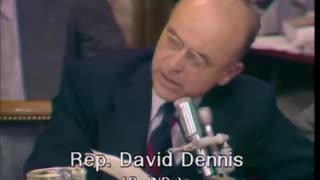 9:22:13
9:22:13
The Memory Hole
1 month agoNixon Impeachment Hearings Day 4 (1974-07-26)
486 -
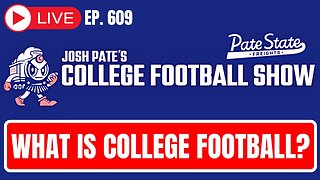 DVR
DVR
Josh Pate's College Football Show
3 hours ago $0.19 earnedBig Ten Program Rankings | What Is College Football? | Clemson Rage| Stadiums I Haven’t Experienced
17.1K -
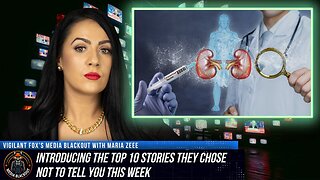 LIVE
LIVE
Vigilant News Network
8 hours agoBombshell Study Reveals Where the COVID Vaccine Deaths Are Hiding | Media Blackout
2,271 watching -
 1:17:59
1:17:59
Sarah Westall
4 hours agoDOGE: Crime & Hysteria bringing the Critics & the Fearful - Plus new CDC/Ukraine Crime w/ Dr Fleming
10.1K2 -
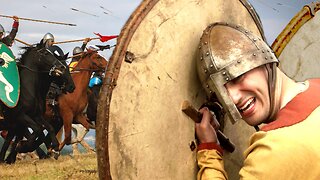 45:39
45:39
Survive History
10 hours ago $0.33 earnedCould You Survive in the Shield Wall at the Battle of Hastings?
6.49K5 -
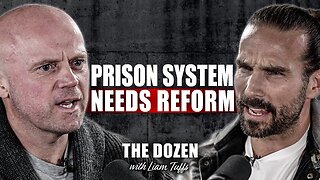 1:50:28
1:50:28
TheDozenPodcast
8 hours agoViolence, Abuse, Jail, Reform: Michael Maisey
34K1 -
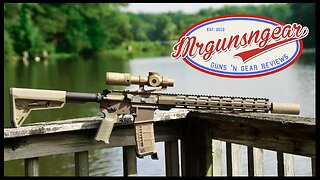 23:01
23:01
Mrgunsngear
1 day ago $2.94 earnedWolfpack Armory AW15 MK5 AR-15 Review 🇺🇸
42.2K12 -
 25:59
25:59
TampaAerialMedia
1 day ago $0.72 earnedUpdate ANNA MARIA ISLAND 2025
22.3K1 -
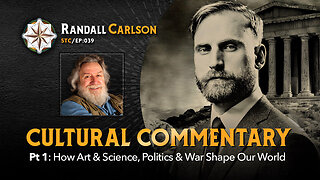 59:31
59:31
Squaring The Circle, A Randall Carlson Podcast
10 hours ago#039: How Politics & War, Art & Science Shape Our World; A Cultural Commentary From Randall Carlson
10.4K2 -
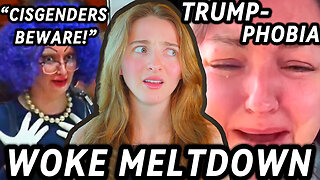 13:21
13:21
Misha Petrov
10 hours agoThe CRINGIEST Thing I Have Ever Seen…
14.5K36